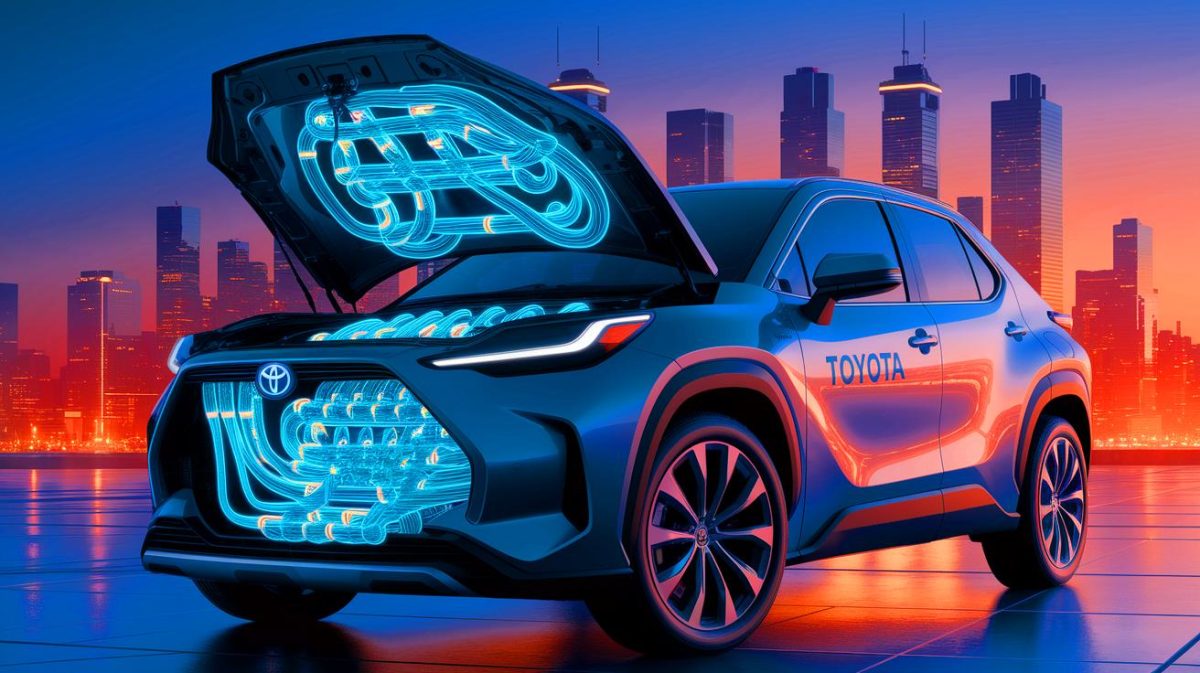How a “Water Engine” Really Works
Behind the poetic label sits a very practical technology. Toyota’s approach is built on hydrogen fuel cells, which convert hydrogen and oxygen into electricity, with water vapor as the only tailpipe output.
There is no magic and no onboard alchemy. The car stores compressed hydrogen, feeds it to the fuel cell, and powers an electric motor. What drivers experience is the smooth, quiet feel of an EV—without lengthy charging times.
Why It Matters Now
Hydrogen mobility promises a familiar refueling routine in a decarbonizing world. It preserves the freedom of long journeys, reduces local pollution, and avoids the pressure that mass fast-charging places on electric grids at peak times.
Toyota’s persistence signals a bet on a diverse future, where battery EVs and hydrogen vehicles play complementary roles rather than competing in a zero‑sum game.
Key Advantages at a Glance
- Zero tailpipe emissions: only water vapor leaves the exhaust.
- Fast refueling: around 3–5 minutes in typical station setups.
- Long range: comparable to many gasoline models, ideal for fleets.
- Cold-weather resilience: less range loss than many battery EVs.
- Energy efficiency in use: electric drivetrain delivers smooth, efficient power.
- Fleet uptime: quick fill-ups keep taxis, buses, and delivery vehicles on the road.
“Hydrogen gives us a way to keep the convenience people love while removing the emissions they don’t.”
The Hurdles No One Can Ignore
Infrastructure is the first stumbling block. Without a dense network of hydrogen stations, adoption stays niche. Building that network requires coordinated investment, standardization, and clear, long-term policy.
The second challenge is upstream carbon. When hydrogen is produced from fossil fuels, the climate benefit narrows. The real prize is green hydrogen, made via electrolysis powered by renewables. Scaling it will cut lifecycle emissions and turn water vapor from symbol to substance.
Cost remains a third barrier. Fuel cells are getting cheaper, but catalysts, tanks, and system integration still add up. As volumes rise and supply chains mature, costs can fall sharply—much as battery prices did over the past decade.
Toyota’s Bet in a Global Race
Toyota has built a reputation for patient engineering and system thinking. With the Mirai on the road and pilots underway worldwide, the company is refining durability, safety, and user experience. It is also exploring hydrogen combustion for motorsport and heavy-duty use, expanding the portfolio beyond fuel cells.
Competitors are in the mix. BMW, for example, has signaled hydrogen plans later this decade, keeping pressure on innovation and procurement. That competition is healthy: it accelerates component standardization, station interoperability, and supplier scale.
What Would This Change?
If hydrogen vehicles mature, the ripple effects span mobility and energy. Refueling times similar to gasoline remove a key pain point for consumers and commercial fleets. Regions with abundant wind and solar can turn excess electrons into storable fuel, balancing grids and creating new export markets.
Hydrogen aligns naturally with segments that need heavy payloads, long routes, or nonstop operation. Buses, trucks, and even emergency services benefit from rapid refueling and predictable uptime. For drivers, the experience is simple: quiet, clean, and familiar.
Safety, Reliability, and the User Experience
Modern hydrogen tanks are engineered to rigorous standards, and vehicles integrate multi‑layered safety systems. Fuel cells are quiet and mechanically simple, with fewer moving parts than combustion engines. Over time, that can translate into lower maintenance and high reliability.
Refueling is designed to be intuitive, with automated locking nozzles and protocols that prevent mishandling. The smoother this experience becomes, the faster trust will grow.
What Must Happen Next
Progress is no longer about proving the car—it’s about building the world around it. Three moves will be decisive:
- Scale green hydrogen with wind, solar, and nuclear-backed electrolysis.
- Expand refueling networks along freight corridors and urban hubs.
- Standardize components and protocols to cut costs and simplify service.
Public incentives can jump-start the flywheel. Once fleets adopt at scale, station economics improve, suppliers invest, and unit prices fall. That feedback loop brought battery EVs into the mainstream; it can lift hydrogen too.
A Pragmatic Path Forward
The most resilient path to clean mobility is a mix of solutions. Batteries shine in urban commutes and home charging; hydrogen shines in high-uptime, long-range duty cycles. Toyota’s work nudges the industry toward this pragmatic balance, where the right tool meets the right job.
If the pieces align—green production, accessible stations, and cost-downs—hydrogen vehicles can move from curiosity to common sight. The destination is clear: cleaner roads, faster refueling, and mobility that feels like freedom, not compromise.
